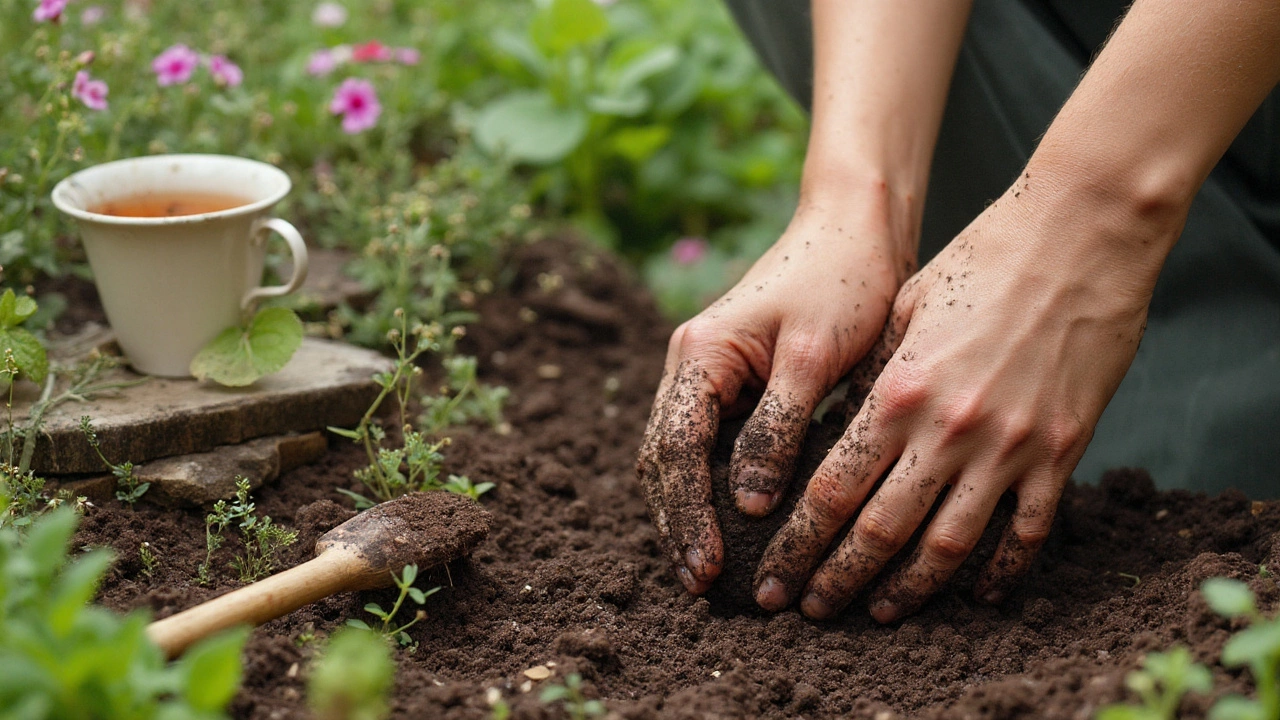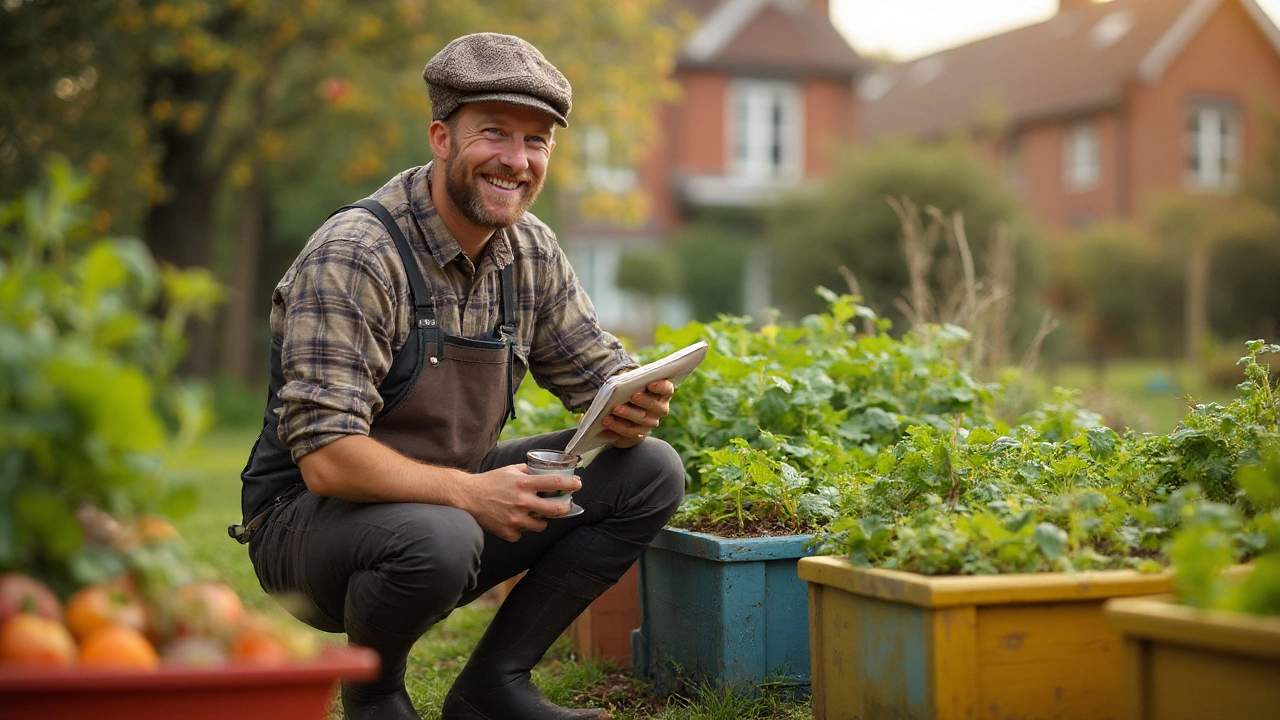Ever wondered why your neighbor’s tomato plants look like something from a seed catalog while yours sulk behind the shed, barely hanging on? People talk about green thumbs as if it’s some rare genetic mutation passed down by garden gnomes or fairy dust. The real story? Gardening isn’t a secret society—it’s a practice, more about curious noses in the dirt and paying attention than about luck. Brace yourself: you don’t need to be an expert or have boundless patience. You just need to know what to notice, what to tune out, and how plants actually want to live. Grab your gloves and let’s yank out the truth.
The Living Soil: The Surprising Foundation of a Lush Garden
When people picture the secret to gardening, soil barely makes the top five in their minds. Think about those chirpy seed packet designers—sunny windowsills, perky blooms, never a speck of dirt. But let me tell you: soil is everything, and real gardeners obsess over it like a sourdough baker fussing over their starter.
What makes healthy soil so important? It’s literally alive with bacteria, fungi, nematodes, and a grab-bag of insects. A teaspoon of healthy garden soil can hold up to a billion bacteria and hundreds of meters of fungal strands, each working behind the scenes to break down organic matter and make nutrients available to your plants. Forget sterile dirt from a bag. You want soil that smells earthy, crumbles in your hand, and has wriggling worms. If your soil’s a crusty, dry slab or a sticky gray mess, plants just won’t thrive.
The big secret? Feed your soil, not just your plants. Tossing in compost, letting fall leaves break down in place, or adding worm castings gets natural processes going. Over-fertilizing with synthetic stuff actually messes up the microbial balance that’s quietly managing your plants’ diet. Mulch is another real-world miracle—about a two-inch layer keeps roots cool, holds in water, and eventually breaks down to feed your soil life.
Testing your soil can feel intimidating, but it’s actually as easy as scooping a jarful and sending it to your local extension service. They’ll give you a rundown: pH, nutrients, what’s too high, what’s low. Most plants prefer a slightly acidic to neutral range (pH 6.0–7.0), but blueberries love it tangy. Here’s the twist: clay soil holds nutrients like a bank vault but drains slow, while sandy soils dump water too quickly. Amending—mixing in organic material like shredded leaves, coconut coir, or compost—can work wonders, but don’t expect instant fixes. Great soil is a living project, not a one-time upgrade.
Want hard numbers? Check out the basics below:
| Soil Characteristic | Ideal Range | Quick Fix |
|---|---|---|
| pH Level (most veggies) | 6.0–7.0 | Lime to raise, sulfur to lower |
| Organic Matter (%) | 5–10% | Compost, leaf mold, aged manure |
| Texture | Loamy (mix of sand, silt, clay) | Mix compost, coconut coir, sand/peat as needed |
The coolest part? When your soil is dialed in, watering and fertilizing drop to almost half. Plants get tougher, pests attack less, and you start seeing that lush, magazine-ready growth everyone wants. Gardening doesn’t really start with seeds or tools—it starts with paying attention to what’s going on underground. Invest your time and energy here, and nature does most of the heavy lifting.

Knowing Your Plants: Matching Choices to Your Reality
Ever bought a six-pack of seedlings just because they looked hopeful in glossy photos, only to watch them curl up and die? You’re not alone. The most overlooked gardening hack is choosing the right plants for your patch of earth. Not all plants are destined for every garden, just like penguins wouldn’t fare well in the tropics.
Start with your climate. Does frost bite hard where you live, or does summer simmer so long your sidewalk eggs fry in July? Most plants fall into three basic categories: cool-season (think lettuce and peas), warm-season (like tomatoes and squash), and perennials that tough it out year after year. Grab your local USDA Hardiness Zone online (for the U.S., at least—it’s an easy lookup), and see if your dream plants fit. For example, Zone 5 folk will struggle to keep a banana tree happy, but a lilac bush will bloom year after year with zero fuss.
Next? Sunlight. Plants read light hours better than any clock. Six or more hours of direct sun equals “full sun,” three to six is “partial,” and less than three? Think shade plants. Skipping this step guarantees disappointment. If a seed pack says “sun,” don’t try to talk it into thriving under a shady maple. The kitchen window that gets two hours of morning glow is not the same as a south-facing wall that bakes all afternoon.
This goes for soil, too. Some plants are picky—azaleas fuss for acidic soil, while lavender dreams of sandy, dry beds. Herbs like rosemary wither in heavy, wet clay. Before hitting the garden center, jot a quick list:
- How many hours of sun does your plot actually get?
- Is the soil sandy, clayey, or deliciously loamy?
- Do you want to eat out of your garden, or mostly grow for color and nectar?
- What’s your frost-free season? Count days between last spring and first fall freeze.
Pick plants that answer “yes” to your garden’s reality, not your wish list. This gets you 90% of the way to success. And here’s something even experienced gardeners get wrong: less is more. Packing too many varieties into a small bed is a recipe for sickly plants and constant trouble. Focus on a handful of winners—say, tomatoes, basil, and marigolds—and see how they do. Once you get the hang of their quirks, you’ll know who to invite to next year’s garden party.
Even with perfect planning, expect a few duds. That’s not a sign you’ve failed—it’s how gardeners learn. Keep a notebook or just snap phone pics as you go. Noticing which plants excel (and which droop or attract bugs) gives you a running start next season. You’ll spot patterns: maybe your peppers always starve for light, or your carrots get stubby in dense soil. The best gardeners are simply people who notice and tweak. Ditch the idea of overnight perfection and play the long game.
Want a quirky fact? Sunflowers literally tilt their heads to follow the sun across the sky—a trick called heliotropism. Most plants aren’t quite that dramatic, but even lettuce rotates its leaves to soak up more light. So, next time you puzzle over garden failures, notice the angles and colors of your plants. They’re talking to you, just quietly.

Daily Habits and Year-Round Tricks for Garden Success
There’s a myth that gardening is all big Saturday mornings and not much else—but steady, small habits are where real magic happens. You don’t need to hover over every leaf, but you do need to show up. Think of your garden as a group of kids that do best with regular check-ins, gentle nudges, and some room to figure out life on their own.
Start simple: water deeply and less often. Surface sprinkles just tease the roots, making plants lazy. Try soaking once or twice a week, watching for how your particular soil drains. Stick a finger two knuckles deep in the earth—dry? Time to water. Wet or cool? Wait another day. Mulching (two inches, remember?) practically halves your watering chores and protects roots from wild temperature swings.
Weed regularly, especially early in the season. A new weed can set thousands of seeds in weeks. Five minutes a day is less headache than a two-hour late spring panic. Pull weeds after rain when the soil is soft and roots slip right out. For dandelions or taproot monsters, try a fork instead of yanking; you’ll save effort and your back.
Deadheading—snipping off spent flowers—triggers plants to keep blooming. Pinching basil and mint back prevents flowering and keeps leaves lush and tasty. Harvest herbs and veggies often, not just when they look “perfect.” A zucchini missed for a single week can turn into a baseball bat.
Pests and diseases need early detection. Stroll your rows with morning coffee and peek under leaves or check new buds. Ladybugs, praying mantises, and birds are your allies—don’t wipe out every creeping thing in search of the mythical bug-free garden. Instead, aim for balance. A diversity of plants helps fend off overwhelming infestations. Marigolds repel nematodes, nasturtiums draw aphids away from treasured veggies, and sunflowers lure birds who eat caterpillars.
Try companion planting: pairings like tomatoes and basil actually boost growth and flavor, while beans “fix” nitrogen in the soil, feeding leafy neighbors. Rotate crops from year to year in each bed—this puzzles out soil exhaustion and confuses pests. If last year’s tomatoes went wild, try peppers or eggplants in that spot next year, not the same plant family. Your veggies will thank you.
Winter isn’t a garden dead zone. It’s the prime time to plan, order seeds, and tidy. Mulch over beds to protect soil and leave some plant stalks for birds. Compost kitchen scraps—all that banana peel and coffee ground action sets your garden up for gold next spring. City gardeners? Try container gardens on patios. Dwarf tomato plants, lettuce, and peppers will thrive even in small pots if you use good potting mix and keep up with water and feed.
- Gardening tips: Start seeds indoors 6–8 weeks before your last frost to get a head start on tomatoes, peppers, and annual flowers.
- Add pollinator-friendly plants like lavender, salvia, or borage—bees and butterflies will thank you and boost your yields.
- Don’t cut everything back in fall—leaving some seed heads helps feed birds and gives overwintering bugs a home.
- If you get serious, keep a simple calendar of what you plant, when, and how it fared. In a year or two, this becomes your secret sauce for bumper harvests.
The real secret to gardening isn’t knowing every answer off the bat. It’s about making small moves consistently, paying attention, and letting nature mentor you. The more you notice, the better you get. So get out there—your dirty hands, tired knees, and accidental mistakes are the price of admission to a seriously rewarding show.
